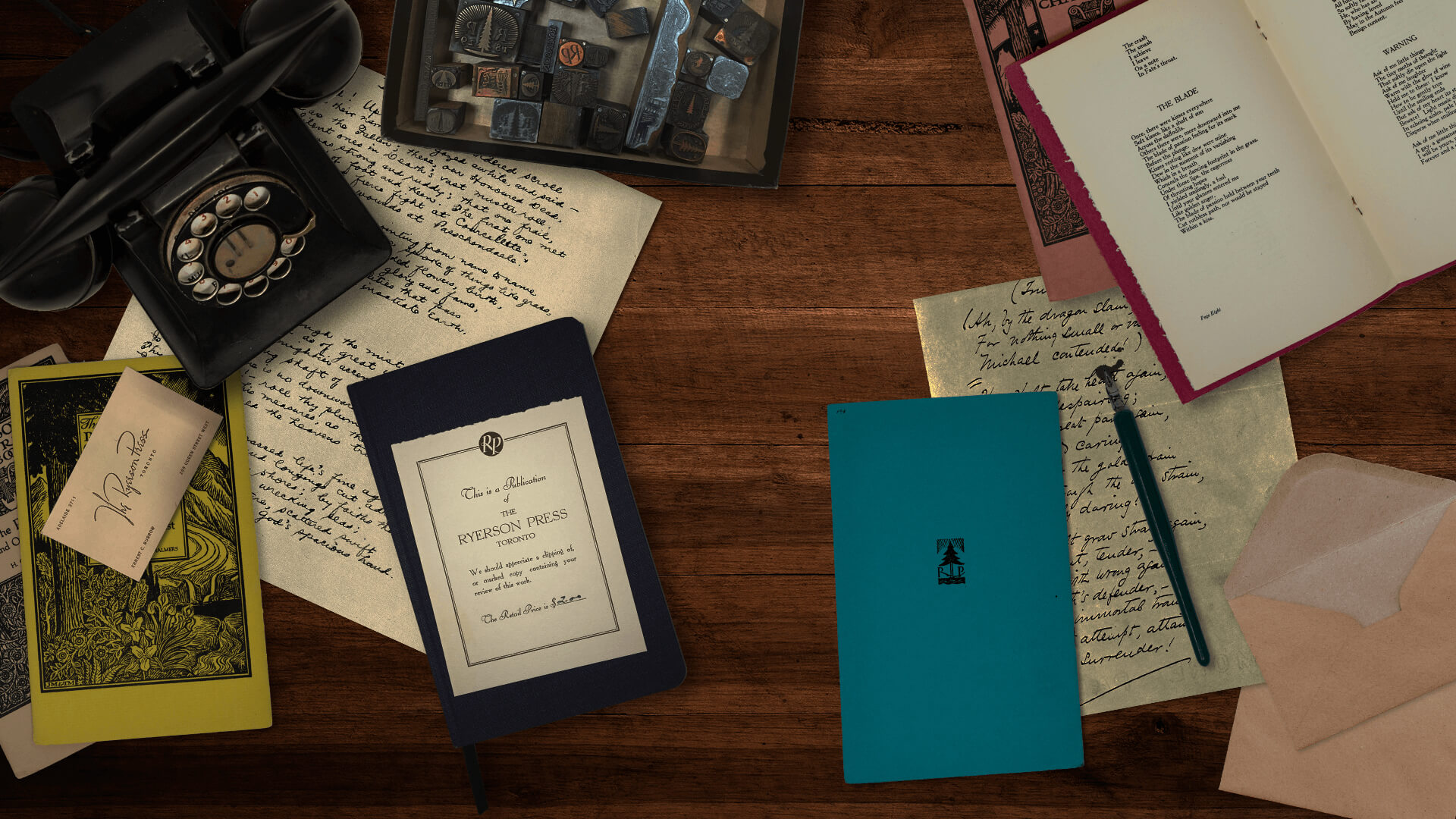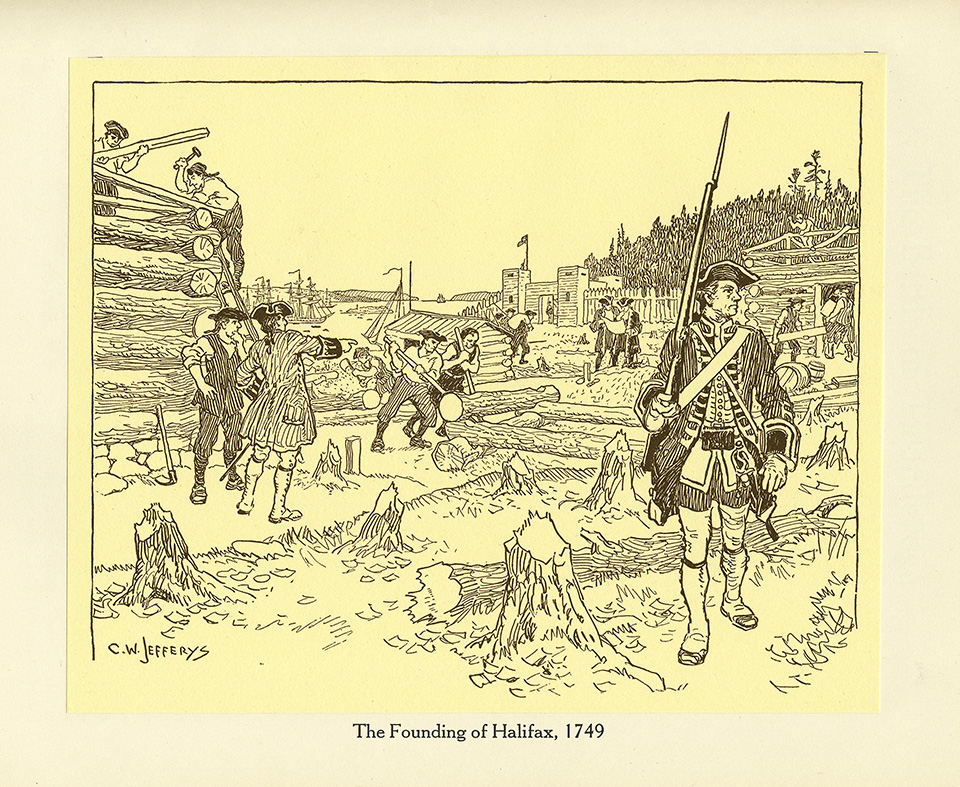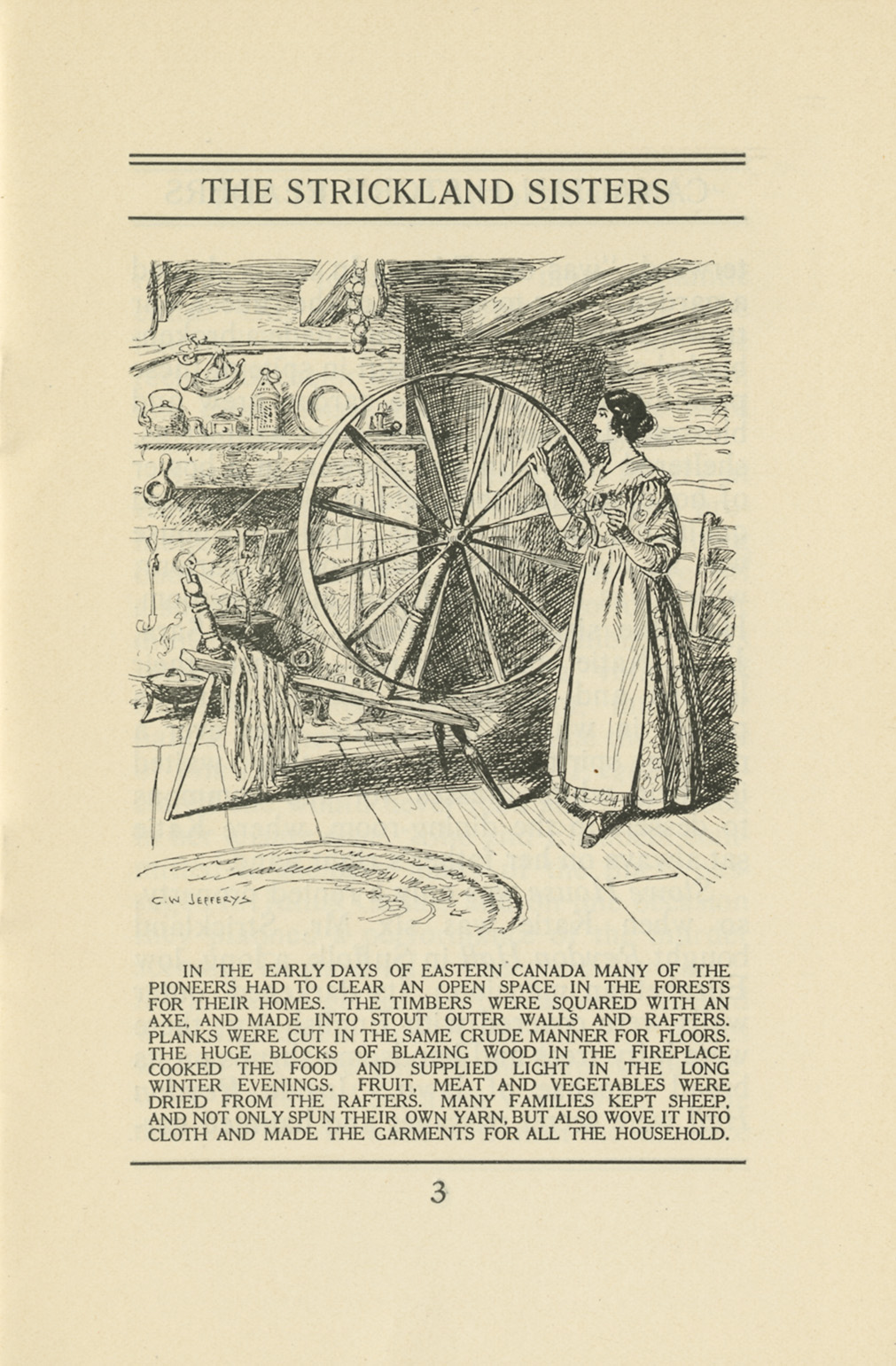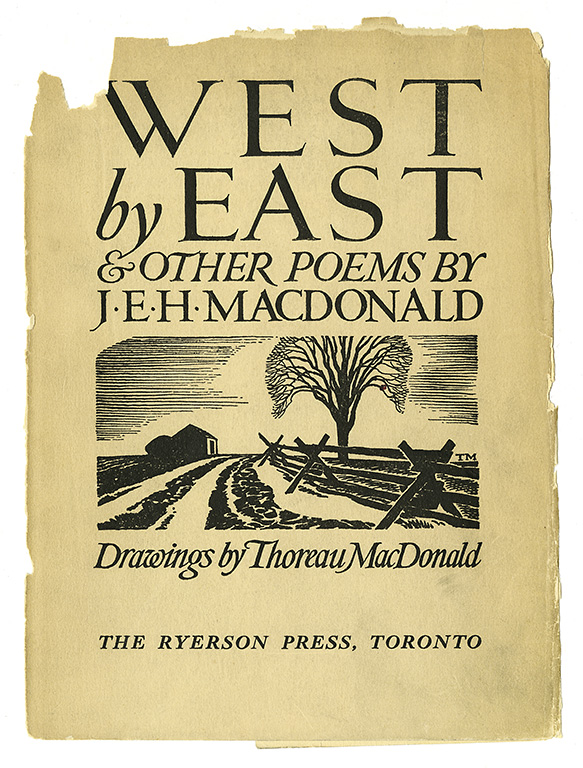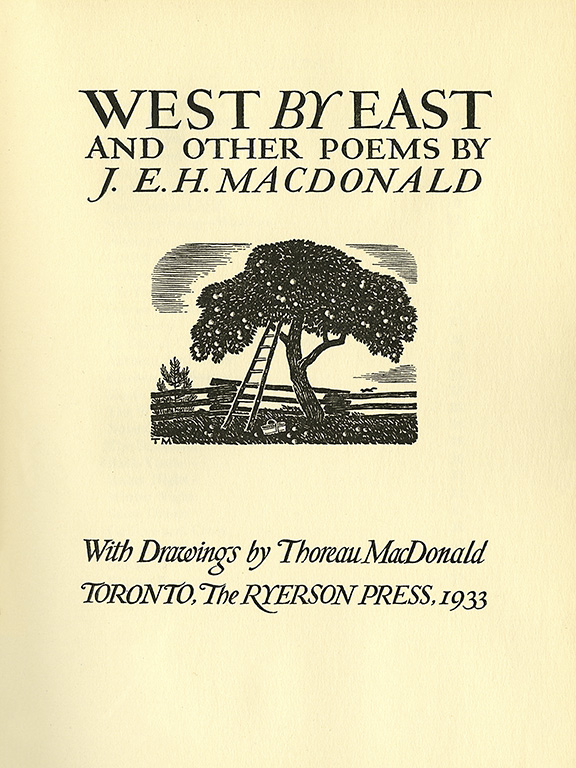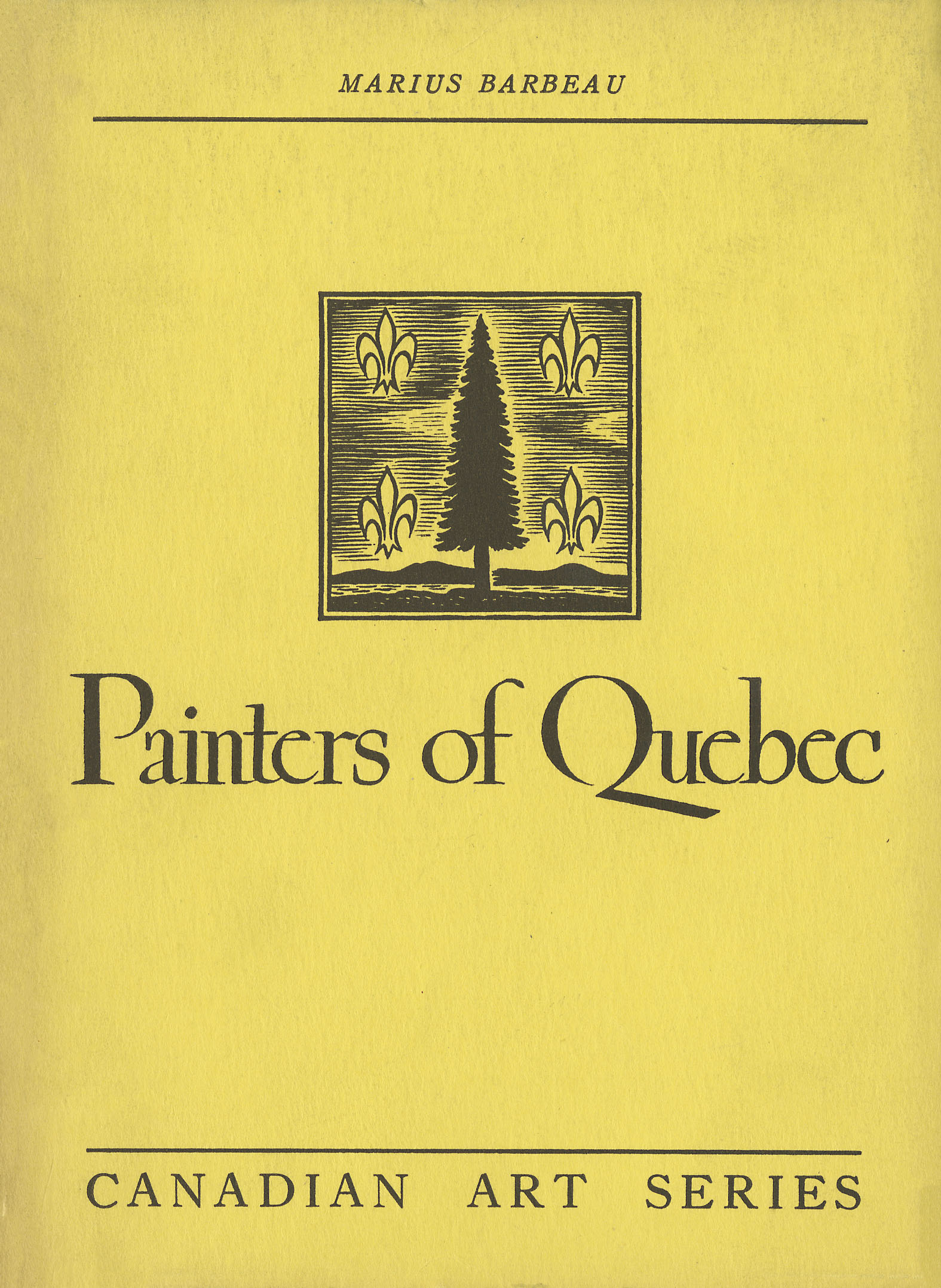The Canadian artists C.W. (Charles William) Jefferys and Thoreau MacDonald made significant design contributions to the Ryerson Press. Each brought a distinctive style and artistic vision to their work as illustrators and designers, and their efforts helped earn Ryerson a well-deserved reputation for producing books of impeccable design.
British-born C.W. Jefferys (1869-1951) was an only child. In England, the Jefferys were neighbours to the renowned author Charles Dickens. The family moved to North America, first to Philadelphia and later, some time around 1880, to Toronto, where Jefferys’s artistic skills were soon put on display. During his childhood school days, fellow students would pay Jefferys pennies to draw decorative illustrations for special occasions and in their personal notebooks, and his teachers would often ask him to do the same on the chalkboard.1

To train as an illustrator, Jefferys attended the Ontario School of Art and Design (now OCAD University) in Toronto, where he took night classes with Canadian painter George A. Reid.2 When those classes ended, he moved with his classmates to the Toronto Art Students’ League, which ran from 1886 to 1904, and then took a three-month course at the Art Students’ League of New York.3 To supplement his formal education, Jefferys honed his skills as an illustrator by undertaking freelance work for the Globe and Mail and the New York Herald.4 His first job out of school as an apprentice at the Toronto Lithographing Company, where he stayed for five years designing cards, can labels, and calendars, helped develop and refine his creative and technical skills as an artist.5
With fellow artist Ivor Lewis, Jefferys founded the Graphic Arts Club (later the Canadian Society of Graphic Artists), which by the 1940s was “the primary artists’ group in Canada.”6 Today, Jefferys is recognized as one of Canada’s most important historical artists, best known for his illustrations, paintings, and murals depicting Canada’s history.

Jefferys’s career as an illustrator began with a commission from the Ontario Department of Education to illustrate a history of the province’s public school system.7 Ryerson Press, which appreciated Jefferys’s interest in Canada’s early settler days and military history, featured his illustrations in many of its textbooks, including the Ryerson Canadian History Readers (1926-1929), a series of 100 booklets used in Canadian schools.8 One example is Blanche Hume’s The Strickland Sisters: Catharine Parr Traill and Susanna Moodie (1928).
Jefferys illustrated Gilbert Paterson’s The Story of Britain and Canada: From the Earliest Times to the Present (1934) and J.C. Stothers and Elva Armitage’s West by South (1938), a social studies book intended for grade six students, both of which are included in Ryerson University Library’s McGraw-Hill Ryerson Press Collection.
Ryerson also issued Canada’s Past in Pictures (1934), a book written and illustrated by Jefferys, and The Picture Gallery of Canadian History in three volumes (1942, 1945, 1950), which included more than 2000 drawings by Jefferys. Two posthumous publications featured illustrations by Jefferys: Sam Slick in Pictures (Toronto: Ryerson Press, 1956) included drawings of the fictional nineteenth-century Yankee clock peddler made famous by sketch writer Thomas Chandler Haliburton, and Fences (Toronto: Ryerson Press, 1958) showcased drawings of the types of fences found in Canada.
Jefferys enjoyed a long and productive relationship with Ryerson Press. He also formed a personal connection with editor Lorne Pierce, who admired Jefferys’s landscapes for their lyrical qualities and his historical illustrations for their fine details. If, however, Pierce championed “the mythmaking power of Jefferys’s images,”9 today we reject their unflattering stereotypical depictions of Indigenous peoples, which featured in many Ryerson Press publications.

Artist Thoreau MacDonald (1901-1989), now considered one of Canada’s most important illustrators and book designers, was the only child of Group of Seven painter J.E.H. MacDonald.10 The family moved around until 1912, when they settled in a farmhouse in Thornhill, Ontario and where MacDonald developed an early love of nature and spent the rest of his life.11 MacDonald’s first experience with art and design came in 1917, when his father fell ill and he had to assist with the design and lettering commissions that formed the family’s livelihood.12
In contrast to Jefferys, MacDonald was self-taught and had no formal artistic education or training, though he was greatly influenced by his father13 and learned from observation and by sketching the natural world around him. Since he was colour blind, MacDonald worked mainly in black and white. He went on to develop graphic design principles and a book illustration style that are now considered part of the Arts and Crafts movement.14

MacDonald favoured nature scenes, specifically Ontario farmland, and his delight in nature is one of the most memorable aspects of his work.15 His style, as Joan Murray describes, is both distinct and recognizable: “skies are always a series of parallel horizontal lines; clouds are simplified amoeboid shapes; trees look like the skeletons of conch shells; and his animals recall the art of the ancient Near East, appearing full face or, more usually, in profile.”16 In fact, MacDonald mastered a clear style of detailed lines, which he used to draw natural objects within stylized scenes.17 He worked with a range of mediums – pencils, pen and brush, stencils, silkscreens, linocuts, woodcuts, watercolours, and oils – and his calligraphy and drawings were used in hundreds of books by a variety of authors.18 MacDonald also launched Woodchuck Press, his personal imprint under which he designed and published sixteen booklets of his own.19
MacDonald’s long association with Ryerson Press began soon after the death of his father, when he designed and illustrated a collection of J.E.H. MacDonald’s poetry, entitled West by East and Other Poems.20 Issued by Ryerson in 1933, the volume included a total of twenty drawings and was printed in a limited edition of 500 copies.21 Thus began MacDonald’s “long and successful collaboration in the design and illustration of Ryerson publications.”22 Like Jefferys, MacDonald formed a close relationship with Lorne Pierce, who commissioned him to design and illustrate books, as well as develop the various logos that would become distinguishing features of Ryerson Press publications. Pierce gave MacDonald the additional commission to design the Press’s annual Christmas cards.

In 1944, MacDonald wrote and published The Group of Seven as part of Ryerson’s Canadian Art series; it contained his opinions on the Group’s artistic contributions to Canada’s history and art. His illustrations often appeared in literary works, such as Duncan Campbell Scott’s collection of stories In the Village of Viger (1945) and A.M. Klein’s The Rocking Chair and Other Poems (1948). In 1951, to celebrate his inimitable style, Ryerson brought out Woods and Fields: 70 Drawings by Thoreau MacDonald, which included a selection of the artist’s previously unpublished drawings and illustrations.
Jefferys and Thoreau, whose gifts for illustration and design were evident in the books they touched, were instrumental in raising the profile of Ryerson Press. As influential illustrators and designers, they understood the aesthetic value of beautifully designed books. As accomplished artists in their own right, they also turned Ryerson Press books into enduring works of art.
1 “C.W. Jefferys: Biography,” Roberts Gallery. Accessed 17 March 2019,
http://www.robertsgallery.net/gallery-artist/c-w-jefferys/?r=1#bio.
2 “Chronology,” C.W. Jefferys. Accessed 17 March 2019,
http://www.cwjefferys.ca/chronology.
3 “C.W. Jefferys: Biography.”
4 “Chronology.”
5 “C.W. Jefferys: Biography.”
6 “Charles Williams Jefferys,” Cabbagetown People. Accessed 19 March 2019,
http://www.cabbagetownpeople.ca/peson/charles-william-jefferys.
7 “C.W. Jefferys: Biography.”
8 “Charles Williams Jefferys.”
9 Sandra Campbell, Both Hands: A Life of Lorne Pierce of Ryerson Press (Montreal/Kingston: McGill-Queen’s UP, 2013) 320.
10 Richard Landon, “Carefully Drawn by Thoreau MacDonald,” Historical Perspectives on Canadian Publishing, McMaster University Library. Accessed 25 March 2019, http://digitalcollections.mcmaster.ca/hpcanpub/case-study/carefully-drawn-thoreau-macdonald?page=1.
11 Landon.
12 Landon.
13 Landon.
14 Landon.
15 Joan Murray, “Thoreau MacDonald,” Canadian Encyclopedia.
http://www.thecanadianencyclopedia.ca/en/article/thoreau-macdonald..
16 Murray.
17 “Thoreau MacDonald, 1901-1989,” University of Toronto Faculty of Forestry. Accessed 25 March 2019, http://forestry.utoronto.ca/thoreau-macdonald-1901-1989.
18 “Thoreau MacDonald, 1901-1898.”
19 Landon.
20 Landon.
21 Landon.
22 Campbell 364.
